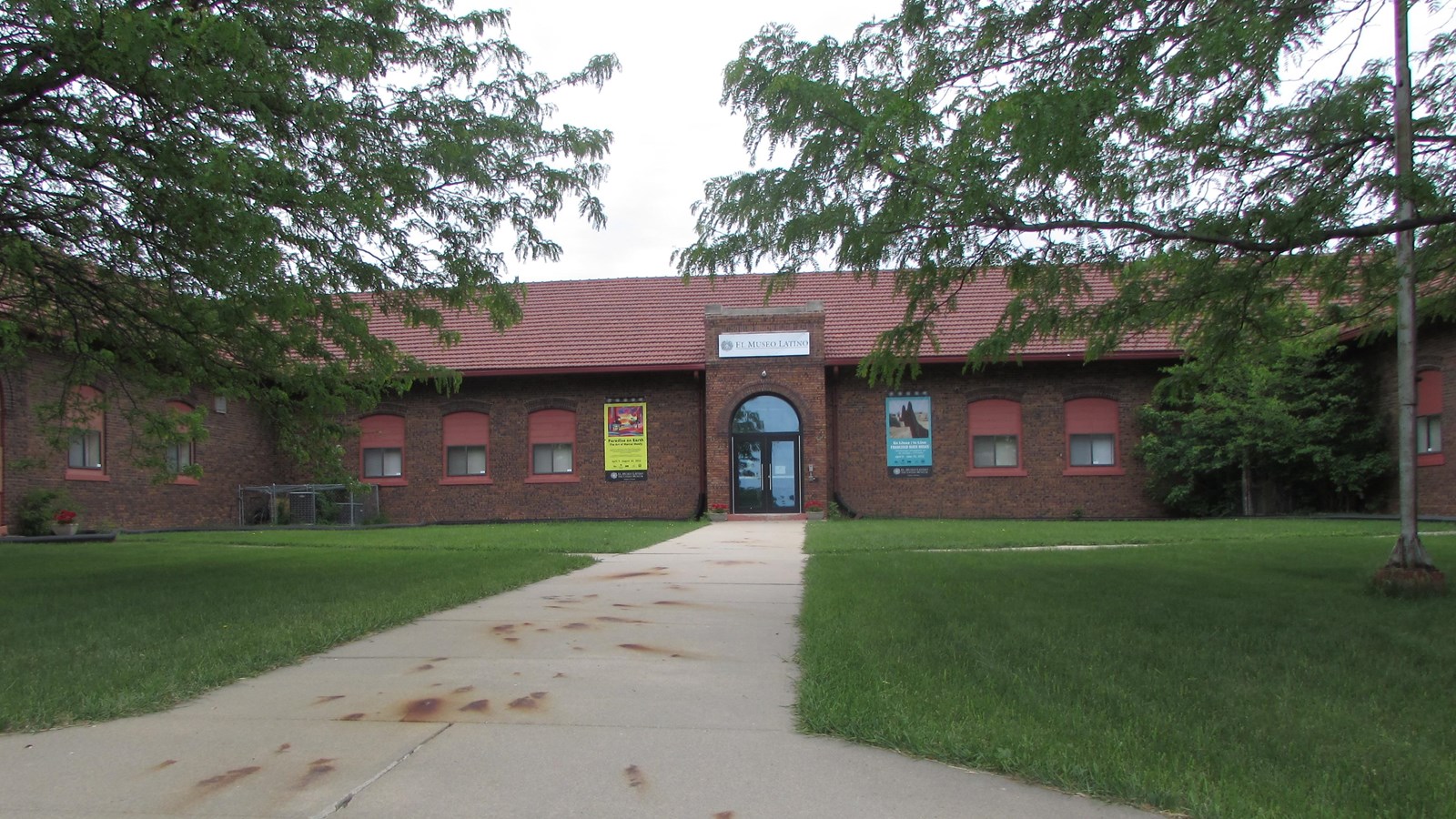Last updated: September 19, 2022
Place
The Polish Home

David Calease, NPS
Quick Facts
Location:
4701 South 25th Street
Significance:
Ethnic Heritage (European); Social History
Designation:
National Register of Historic Places
MANAGED BY:
Private Property Owner
The U-shaped Polish Home was constructed in 1916 as the South Central School, which closed in 1930. The building hosted the American Legion “Melting Pot” post and a mix of local activities, until being purchased by a Polish-American organization in 1936. Now listed in the National Register of Historic Places, The Polish Home served as the center of Polish American cultural activities for the next 62 years.
Arriving in Omaha in the 1880s, Polish immigrants settled predominantly near meat packing houses in South Omaha. “Little Poland” was concentrated between 25th and 29th Streets from F to L Streets, just north of the Polish Home. By the 1930s, Omaha had one of the largest concentrations of Polish Americans west of Chicago. Polish fraternal groups flourished throughout the Omaha area during the first decades of the twentieth century, eventually banding together to raise funds for a building to host Polish cultural activities and community events.
The Polish Home became a center of Polish American cultural activities in Omaha for the next six decades, hosting celebrations, community‐wide receptions and dinners for visiting Polish‐American dignitaries and/or important Polish nationals, and special events, such as the raising of funds for the defense of the Poland prior to World War II and for Polish refugees during the war.
The Home help keep Polish traditions alive in South Omaha through its library and reading room, Polish lectures, plays and movies, Polish songs and music, events highlighting Polish folk dancing, and many social events featuring non-Polish South Omahans dancing to polka bands, drinking beer, eating pierogis and kielbasa from the Home’s kitchen, and enjoying an evening of shared traditions.
Over time many Polish Americans moved to various suburbs, weakening the membership of the Polish Home to where it could not financially survive. Immigrants from Central and South America shifted the neighborhood’s demographics, giving the Polish Home new life as El Museo Latino which promotes the ethnic heritage of the local community, exhibiting artworks, hosting community celebrations, and staging cultural performances.
Arriving in Omaha in the 1880s, Polish immigrants settled predominantly near meat packing houses in South Omaha. “Little Poland” was concentrated between 25th and 29th Streets from F to L Streets, just north of the Polish Home. By the 1930s, Omaha had one of the largest concentrations of Polish Americans west of Chicago. Polish fraternal groups flourished throughout the Omaha area during the first decades of the twentieth century, eventually banding together to raise funds for a building to host Polish cultural activities and community events.
The Polish Home became a center of Polish American cultural activities in Omaha for the next six decades, hosting celebrations, community‐wide receptions and dinners for visiting Polish‐American dignitaries and/or important Polish nationals, and special events, such as the raising of funds for the defense of the Poland prior to World War II and for Polish refugees during the war.
The Home help keep Polish traditions alive in South Omaha through its library and reading room, Polish lectures, plays and movies, Polish songs and music, events highlighting Polish folk dancing, and many social events featuring non-Polish South Omahans dancing to polka bands, drinking beer, eating pierogis and kielbasa from the Home’s kitchen, and enjoying an evening of shared traditions.
Over time many Polish Americans moved to various suburbs, weakening the membership of the Polish Home to where it could not financially survive. Immigrants from Central and South America shifted the neighborhood’s demographics, giving the Polish Home new life as El Museo Latino which promotes the ethnic heritage of the local community, exhibiting artworks, hosting community celebrations, and staging cultural performances.
